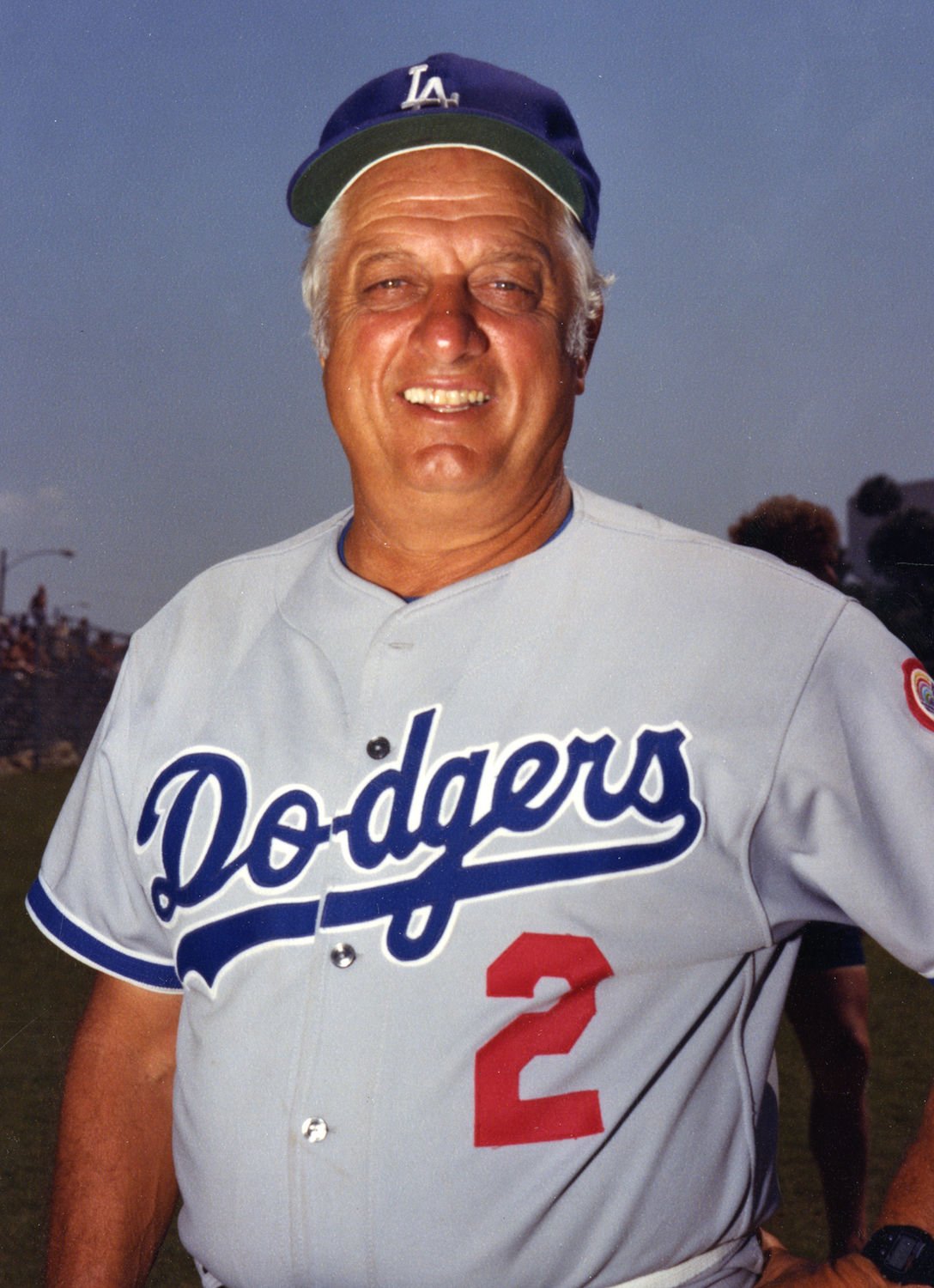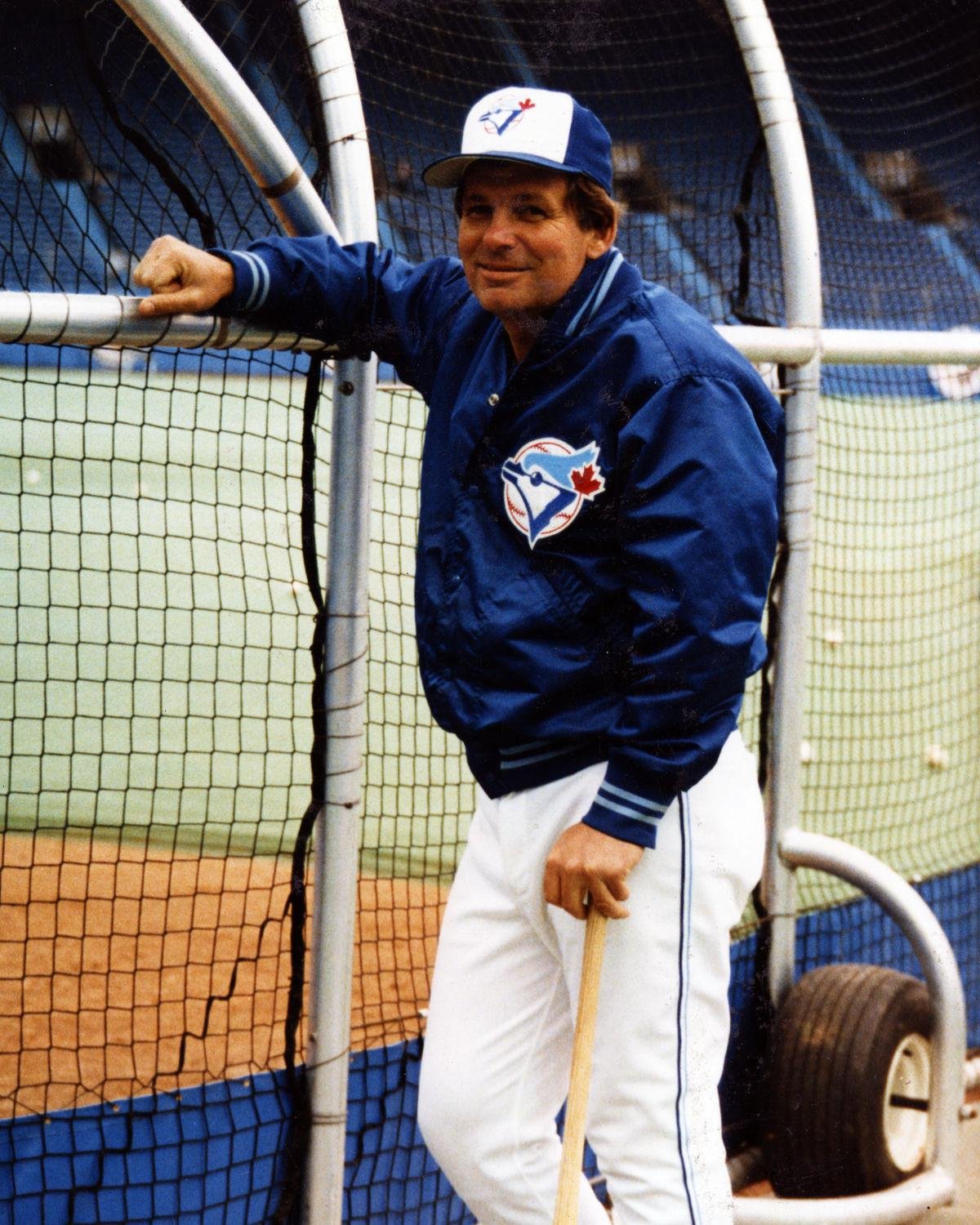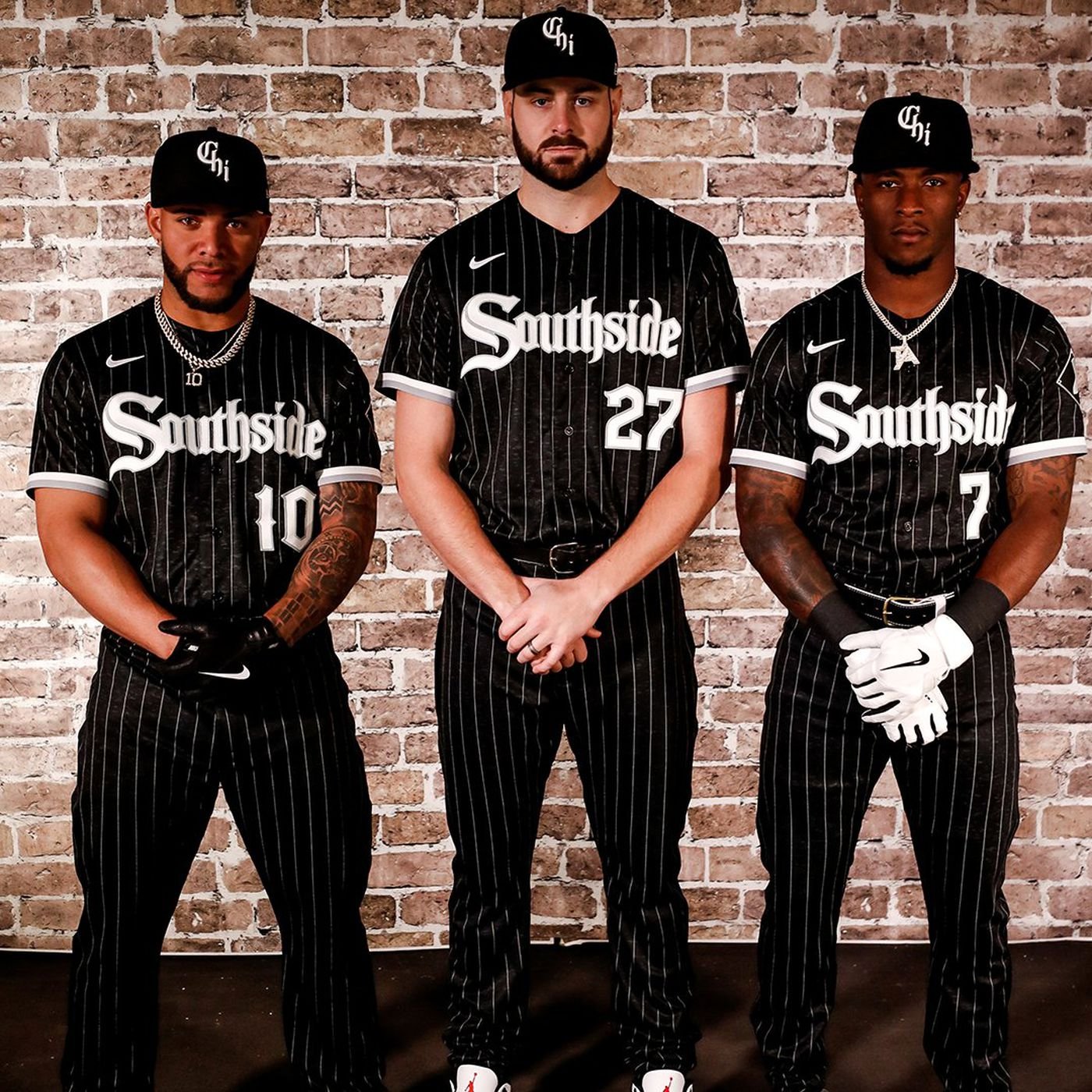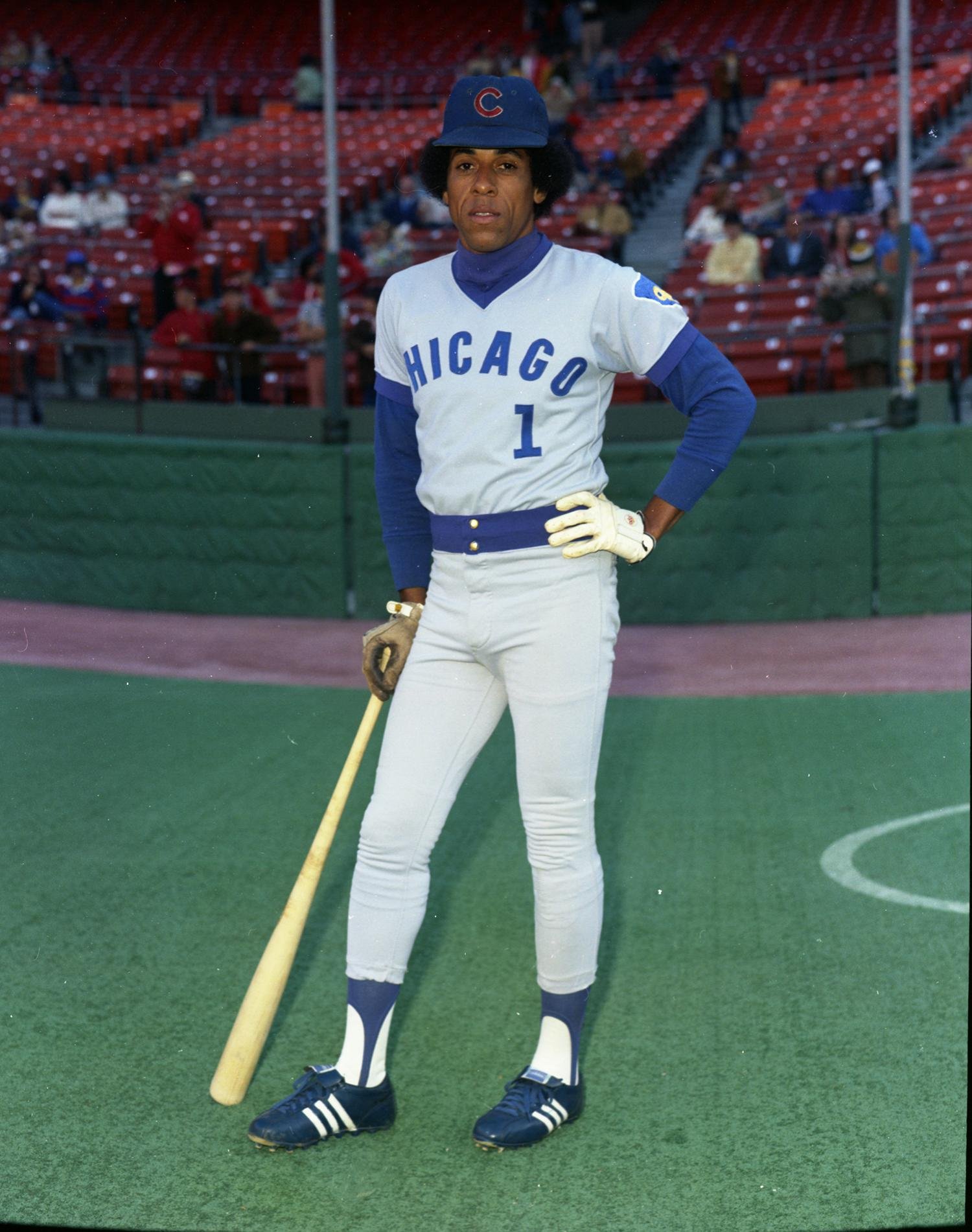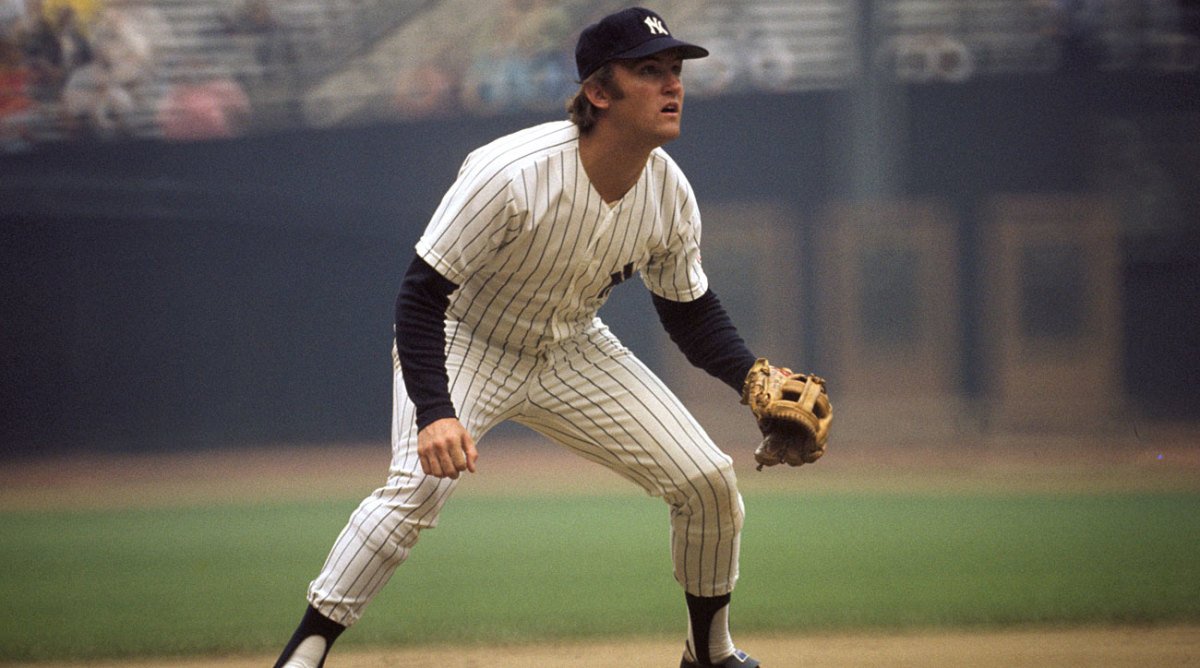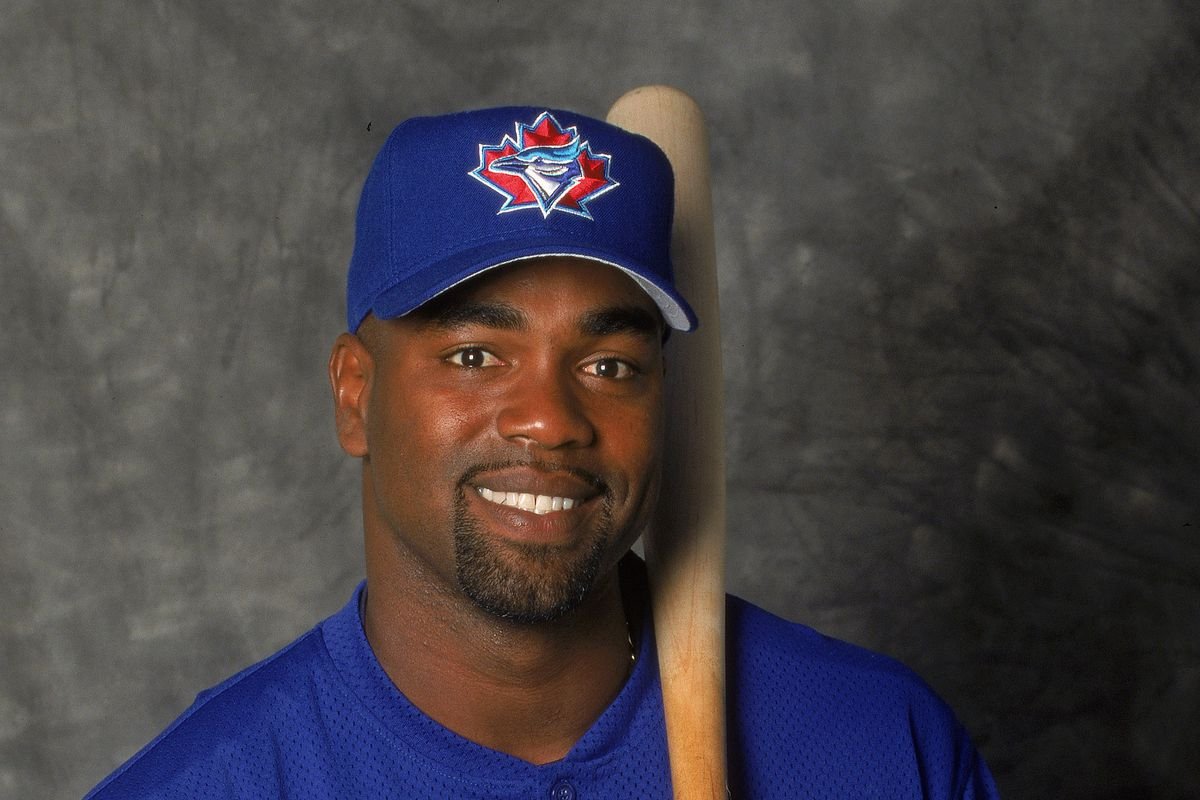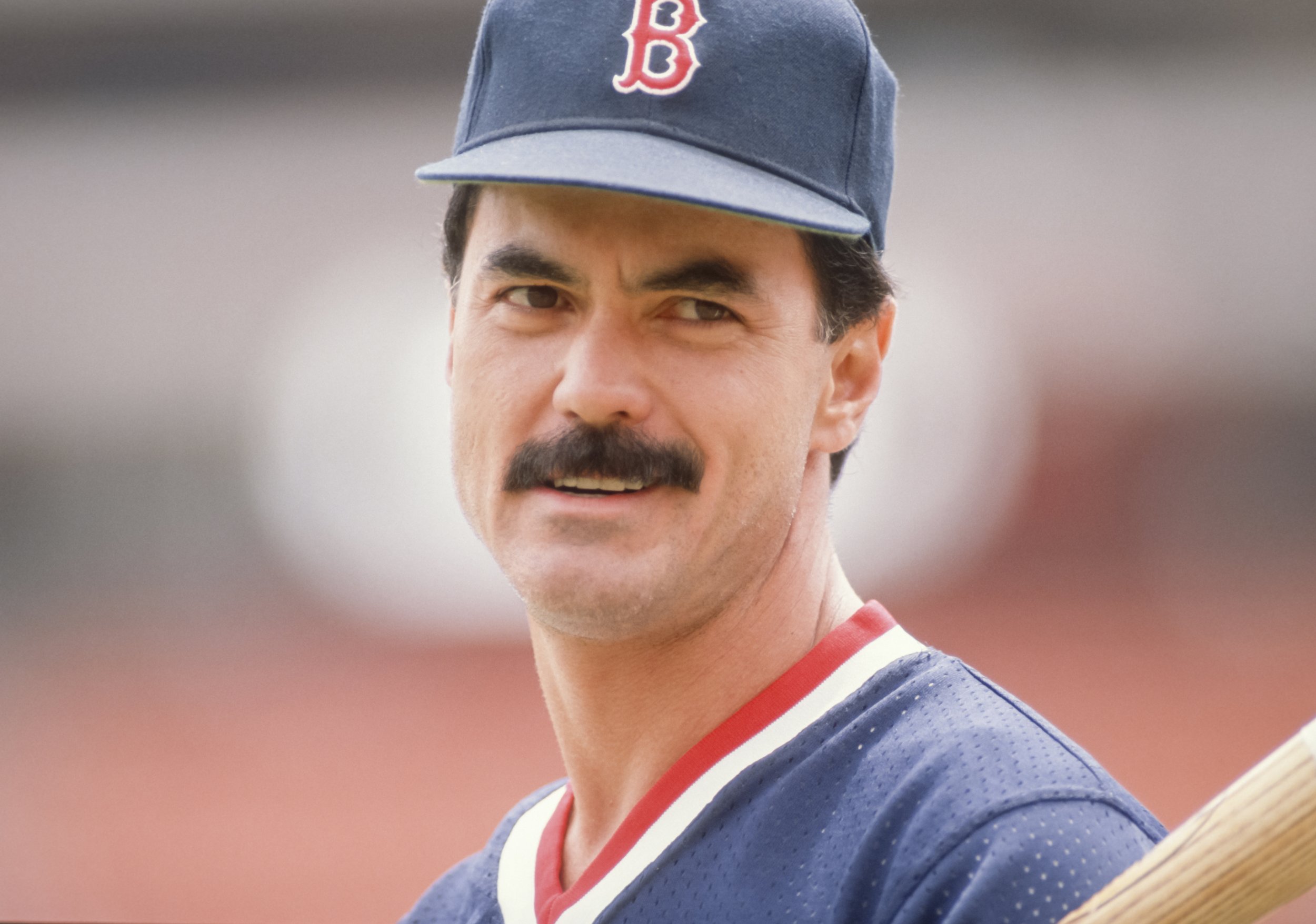Welcome to another Humm Baby Baseball countdown and today we’ll be countdown my top 15 Managers in MLB History. This is a very tough ranking as it’s not always clear who is most responsible for great teams – is Miller Huggins the reason the ‘27 Yankees were so good? Or maybe it had a little something to do with Babe Ruth and Lou Gehrig among other great players. Well, for that example, the Yankees struggled before Huggins and then struggled again after – even with Ruth and Gerhig still in the lineup. While managers can only be great if they have great ballplayers to work with, a poor manager will still lose more games than they win even with great players. Knowing how to manage a bunch of MLB players with huge personalities and egos as well as keeping a team motivated through a long grueling MLB season are as important as knowing when to pinch hit, when to make a pitching change and what order to put the lineup in. The best managers are the ones who can stick around for decades, keep the team chemistry positive, help lead their teams to multiple championships and simply bring out the best in their players. Some one who is not a natural leader probably won’t last long at being an MLB Manager. So, here we go with my Top 15 MLB managers of all time – considering their win-loss record, championships, longevity as well as what their players had to say about them. Before we get into the Top 15, here are 5 honorable mentions..
Honorable Mentions
Terry Francona
He is currently approaching 2,000 career wins as the manager of the Cleveland Guardians and has proven himself to be one of the greatest manager of all time. Tito had an average at best start to his managerial career with the Phillies but got a second opportunity with the Red Sox in 2004 and led the team to a World Series ring, breaking the Curse of the Bambino . He led the team to a 2nd World Series title in 2007 and finished his Red Sox managerial career with a 744-552 record before heading to Cleveland where he has won 4 division titles and one pennant along with three manager of the year awards.
Earl Weaver
Weaver is 6th all time with a .583 winning percentage as manager of the Baltimore Orioles for 17 seasons. He didn’t quite reach 1,500 wins much less 2,000 which is why he didn’t make the main list but Weaver was an early version of the modern day manager – he believed in pitching, defense and the three-run home run. He wasn’t as focused on small ball and his strategy paid off as Weaver led the Orioles to 4 American League pennants and a World Series Championship in 1984. And he was notorious for his epic rants and meltdowns when the umpiring was not on point.
Lou Piniella
With over 1,800 wins, Piniella definitely deserves a mention. He is a two-time manager of the year award winner and led the Mariners to a franchise record 116 win season in 2001. Sweet Lou was hired as manager of the Reds in 1990 and took them to the World Series, where they swept the A’s. He managed of 21 seasons all told with 7 playoff appearances, managing the M’s, Reds, Yankees, Devil Rays and Cubs.
Jim Leyland
Another name I just couldn’t find room for in the Top 15, Leyland is one of the few managers to win a pennant in both the N.L and A.L. - and he was the skipper for the Marlins when they won their first World Series in 1997. He led the powerful early 90’s Pirates teams to 3 straight N.L. East titles although they couldn’t get past the NLCS. He repeated that with Detroit, winning 3 straight A.L. Central titles but failed to win it all, although his Tigers did reach the World Series in 2012, but were swept by the Giants. Overall, Leyland was a tough but fair manager who won over 1,700 games along with 3 manager of the year awards.
Bill McKechnie
A former deadball era player, Bill McKenchie was one of the early great managers of the game and would’ve been close to #1 on this list 100 years ago. Known as “Deacon” for his quiet & unassuming demeanor and regular participation in the church choir, McKechnie became the first manager to win a World Series with two separate teams – the Reds and the Pirates. He is 16th all time in Wins and also led his teams to 4 pennants. He was the manager of the Boston Braves in 1935 when Babe Ruth played his final season, a terrible season all around as Ruth lasted only a month before retiring and the Braves lost 115 games. Overall, McKechnie still had a great managerial career with a .524 winning percentage.
Now, let’s get into the Top 15.
15. Bucky Harris
Bucky Harris
At the young age of 27, Bucky Harris was hired by the Senators to be a player-manager and he led the team to a World Series Championship. He picked up the nickname “The Boy Wonder.” Harris went on to manage 29 seasons, the 4th most in MLB history, wining 2,158 games along with three pennants and two World Series. He won the second title with the Yankees in 1947. He was one of the earliest managers to deploy relief pitchers on a regular basis, not expecting every starter to pitch all nine innings. He was also a great player’s manager, which likely stemmed from managing guys older than he was at the start of his managerial career. “If you can’t play for Bucky, you don’t belong in the major leagues,” said Joe DiMaggio. His won-loss percentage was just .493 and he was fired multiple times, which is normal for most long-time managers. Still, Bucky Harris had a managerial career that got him into the Hall of Fame.
14. Tommy Lasorda
Tommy Lasorda
With 1,599 wins, Tommy Lasorda didn’t quite reach 2,000 but no one can deny he is an absolute legend. He managed the Los Angeles Dodgers for 20 years from 1976 to 1996, with an amazing ability to get the most of his young talent. During his tenure, nine Dodger rookies won the Rookie of the Year Award. Lasorda’s managerial career started off with back-to-back NL Championships in ‘77 and ‘78. He had a career .526 win/loss percentage, four pennants and two World Series rings – one in 1981 and the other in 1988. He was inducted into the Hall of Fame a year after his retirement and in 2000 he managed the U.S. Olympic Baseball Team to a gold medal. He is in the Top 5 All-Time MLB Managers for the longest tenure with the same team – 21 years as the Dodgers manager and then went on to become Vice President of the team. All told, as a player, manager and front office executive, Lasorda spent over 70 years as a part of the Dodgers organization. According to Orel Hershiser,when playing under Lasorda “Every day was do or die. There was no small day in Tommy Lasorda’s life.”
13. Leo Durocher
One of the most larger-than-life characters in baseball history, Leo Durocher won over 2,000 games as manager of the Dodgers, Giants, Cubs and Astros. His fiery personality and banter with the umps, front office and MLB Executives led to his nickname – “The Lip.” However, despite the controversies, he knew how to manage and in 1941, he led the Dodgers to their first pennant in 21 years. Later, he left to manage the rival Giants and led them to an almost impossible 13 ½ game comeback in late 1951, leading to the famous Bobby Thomson Shot Heard ‘Round The World. Later, his Giants swept the Indians in the ‘54 World Series. He retired with the second most wins in National League managerial history. Based on the amount of years he managed, only one World Series title is a little low, but with overall winning percentage of .540 and over 2,000 wins, Durocher is definitely one of the best managers in MLB history.
Dusty Baker
12. Dusty Baker
Coming in at #11 is the great Dusty Baker, who beats out Durocher after winning his first World Series title in 2022 with the Houston Astros. Baker now has 2,149 wins - 8th all time – and also has a .540 winning percentage. He has won the Manager of the Year award three times including his debut managerial season in 1993 when he led the San Francisco Giants to 103 wins, but due to the lack of a Wild Card that year, the Giants missed out on the playoffs because the Atlanta Braves won 104. From 2008 to 2013, he managed the Reds and they made their first 3 postseason appearances since 1995. In fact, Baker took every team he managed to the postseason at least once – the Giants, Cubs, Reds, Nationals and Astros. The players he manages have only positive things to say about Baker, who will go down as one of the greatest managers ever.
Bruce Bochy
11. Bruce Bochy
Even before leading the San Francisco Giants to three World Series Rings in 5 years, Bruce Bochy was a great manager for the Padres, leading them to four division titles in 12 years, many of which he had to manage a very young team in a rebuilding process. He won over 900 games with the Padres then over 900 with the Giants, becoming the only manager to win at least 900 games with two separate teams. During the 2010, 2012 and 2014 seasons, he led the Giants to a World Series ring each run despite being underdogs in every single playoff series. This even-year streak ended in 2016 when the Giants lost to the Cubs in the NLDS. Bochy eventually retired but then returned in 2023 to manage the Texas Rangers and, as of this recording, he has led the team to a 59-42 record to lead the American League West. Bochy has 2,062 wins and counting and has improved his career win-loss percentage to .499, still just short of .500, which is the only reason he comes in this low. Based on his performance in Texas, however, he could be moving up very quickly.
Casey Stengel with some of his players
10. Casey Stengel
Coming in at #10 is the legendary Casey Stengel, who led the Yankees to the World Series 10 times in 12 years, although obviously guys like Joe Dimaggio, Mickey Mantle, Yogi Berra and Whitey Ford may have had a little something to do with it as well. Before he took over the Yankees, Stengel managed the Brookyln Dodgers and Boston Braves, never finishing above 5th place and at the end of his career, he managed a terrible New York Mets expansion team, losing over 100 games each year. Neverthless, his time with the Yankees can’t be ignored and he led several powerhouse Yankee teams to the Fall Classic, winning an unprecedented five consecutive World Championships. In total he led the Yankees to 7 World Titles and 10 A.L. Pennants. Unfortunately, when not managing those stacked Yankee teams, he has a .397 winning percentage, which is why he comes in a little lower than you might have expected. Incredibly, his years with the Yankees still bump his overall percentage up to .508 and when combined with his colorful personality and legendary quotes, Stengel still belongs in the Top 10.
Miller Huggins
9. Miller Huggins
Huggins began his managerial career during the final four years of his playing career with the St. Louis Cardinals. He was credited with helping fix a young Rogers Hornsby’s batting stance. In 1918, he took over a struggling New York Yankees team and helped turn them into champions, leading them to three World Series rings. He was a master at the fundamentals and drilled these principals into the minds of his players. He was also instrumental in several trades and transactions that helped build the Yankee juggernauts of the 1920’s, even though many of his trades were unpopular at the time. He was a great motivator and knew how to handle big personalities. “He was the only man who knew how to keep me in line,” said Babe Ruth. He took the Yankees to the World Series in 1926, ‘27 and ‘28, winning it all in ‘27 and ‘28. He passed away before the end of the season in 1929. Even with Ruth, Gerhig, Tony Lazzeri and other greats, the Yanks finished in 3rd place in 1930. Even though he won just 1,413 games due to his death at just 51 years old, Huggins had a career .555 winning percentage with 6 pennants and 3 world titles.
8. Connie Mack
Imagine a manger from the 1960’s still managing today. That would equal 7 decades of managing Major League Baseball – something only one man has ever done. Connie Mack started out his managerial career in the 1890’s and his final season was 1950, totaling 7 separate decades. He managed for a total of 53 years, including 50 with the Philadelphia Athletics. Because of the sheer number of games he managed, Mack easily comes in at #1 all-time in wins with 3,731. The downside is he’s also #1 in loses with 3,948. Still, Mack is an all-time legend, famous for wearing his trademark business suit standing tall in the A’s dugout for 50 years. He led them through 2 dynasties which included 9 pennants and 5 World Series titles. He was also manager through a few rough patches which might have resulted in a firing had he not been a partial owner of the team. At one point, the A’s had 10 consecutive losing seasons. As a manger, he was easy-going but did demand his players follow a code of conduct, making sure his players composed themselves as professionals on and off the field and demanded that they judge others as an individuals and never on the basis of race or religion. He managed until the age of 87. Overall, Connie Mack is very hard to rank because he has a losing record but he did win his share of games and championships and is certainly #1 as far as longevity.
Joe Torre
7. Joe Torre
After an 18-year playing career that included an MVP and 252 home runs, Joe Torre went on to manage five different teams for nearly 30 years, winning a 5th best all time 2,326 games. His first managerial stint did not go too well with the Mets and after five losing seasons from ‘77 to ‘81, he was fired. Things went better in Atlanta in 1982 when he took the Braves to the playoffs for the first time since 1969. Unfortunately, after finishing in 2nd in ‘83 then 3rd in ‘84, he was fired, moving to the broadcast booth for a few years until the Cardinals hired him as manager in 1990. He never made the playoffs and was fired midway through the ‘95 seasons. It was at this point that the Yankees made the surprising choice to hire him to the dismay of most Yankee fans. He had never won a playoff game in 14 years as manager. As it turned out, he hit his stride in New York and won the Manager of the Year Award in 1996, kicking off a Yankee Dynasty that included 12 consecutive postseason berths and 4 World Series Championships in 5 years. He led the Yankees to 6 pennants in 8 years and 10 AL East Championships in 12 years. He finished his managerial career with the Dodgers, winning the N.L. West in 2 out of 3 seasons. Although it’s true he didn’t become a winning manager until he had a stacked roster, he did a great job of handling the big personalities along with the high pressure media and fans of New York.
“He’s a great manager,” said former Yankees third baseman Scott Brosius. “There is more to it than who to pitch and play. It’s managing people, the press… and Joe does that all great. Players follow the tone set by the manager, and Joe is the calming influence of this team.”
Despite his early struggles with the Mets, Braves and Cards, he finished his career with a .538 winning percentage.
Walter Alston
6. Walter Alston
He might be the only Hall of Famer who struck out in his only career MLB at bat. That’s because, of course, Walter Alston was inducted for his managing career with the The Dodgers, who had never won a World Series Championship until Alston came on board. Once the quiet and unknown Alston took over the team in 1954, improvements were immediate and in 1955, the Dodgers won it all. They returned to the Fall Classic in 1956, losing in 7 games to the Yankees. Year after year, the Dodgers brought him back on a one-year contract and he ended managing the team for 23 seasons, in both Brookyln and Los Angeles. He led the Dodgers to seven pennants and their first four World Series titles – the majority of their seven overall rings. Even after the retirement of Sandy Koufax in 1966, the Dodgers stayed competitive, wining at least 85 games in each of Alston’s final 8 seasons as manager, leaving the franchise is great shape for his replacement Tommy Lasorda. He won over 2,000 games and had an excellent .558 winning percentage. Alston had an easy-going and calm demeanor, never yelling at or embarrassing his players.
"Walt treats his players like men," said former Dodgers outfielder Dixie Walker. "If he feels a player isn't doing his best he doesn't fine him or cuss him out or sit down and talk with him. He just won't play him anymore."
The strategy seemed to pay off for Walter Alston, who was instrumental in making the Dodgers a top quality franchise they continue to be known as today.
Bobby Cox with the Blue Jays
5. Bobby Cox
Bobby Cox is one of just four MLB managers with over 2,500 wins and he was at the helm for the Atlanta Braves teams of the 90’s and 2000’s, leading them to 14 consecutive division titles. Unfortunately, they won just 1 World Series in 1995, which is why he doesn’t come in even higher. He started out as a manager in the Yankees minor league system before the Braves hired him in 1978. He made some improvements to the poor Braves teams of the late 70’s and early 80’s but was eventually fired before moving on the manage the Blue Jays, who had just finished dead last in 1981. He turned the team around, improving year after year until finishing in 1st place in 1985. He returned to the Braves as General Manager in 1986 but when no manager could get the job done on the field, he hired himself as manager in 1990 and took another last place team to the playoffs in 1991, this time all the way to the World Series, where the Braves lost in extra innings in Game 7 to the Twins in one of the greatest Fall Classics of all time. Known as a players manager, Cox treated his players with respect while instilling a winning attitude.
“He was the single greatest influence on me as a player, in terms of teaching the game, respecting the game, carrying yourself the right way on and off the field,” said former Braves pitcher Tom Glavine.
Cox also has a big league record 158 ejections, creating entertainment for the crowd while defending his players.
Sparky Andreson with the Reds
4. Sparky Anderson
Sparky Anderson managed for 26 consecutive seasons, first with the Reds from 1970 to ‘78 and then from 1979 to 1995 with the Detroit Tigers, compiling an impressive .545 winning percentage and 2,194 total wins. Before starting his managerial career in Cincinnati, the Reds were a good team, winning around 85 to 90 wins per season until Sparky arrived and immediately propelled them to a franchise record 102 wins in his first season. The Big Red Machine made the playoffs in 4 of his first 5 seasons there and won it all in ‘75 and ‘76. They re-broke that franchise record of 102 wins with 106 in 1975. In fact The Reds, who’ve been around since 1869, have won over 100 games in a season just 3 times – all 3 with Sparky as manager. He is hands down the best manager in Reds history, but was mysteriously fired after the 1978 season in which the Reds won 92 games and finished in 2nd place, just 2 ½ games out of 1st. The Tigers immediately began negotiating a deal to hire Anderson despite having already hired a new manager, Less Moss. They fired Moss 1/3rd into his first season after a deal was struck with Sparky, not for under performance but simply because they had gotten Sparky. The Tigers quickly improved as a team and won it all in 1984, which is still their most recent World Series championship. Sparky Anderson posted a winning record in 19 of his first 20 seasons as manager and other than managing some horrible 1990’s Tigers teams, his resume is absolutely stellar.
"He was great at handling great players. He knew the guys to slap and he knew the guys to kiss,' said Bill Gullickson, former Tigers pitcher.
Anderson retired after the 1995 season and was inducted into the Hall of Fame in 2000.
Tony La Russa as manager of the Oakland A’s
3. Tony La Russa
La Russa has managed an MLB team in 6 separate decades and is second all-time in wins behind Connie Mack with 2,902 wins. He won over 50% of his games with every team he’s managed – the White Sox, A’s and Cardinals and has a career .536 winning percentage with a 70-58 postseason record. He started out as a minor league manager in the White Sox system before landing the job at the big league level in 1979. From there, the White Sox slowly improved, eventually winning 99 games in 1983, winning the A.L. West. He then headed to Oakland in 1987 to try to improve another struggling team who had finished with a losing record for 7 straight years. He got them to .500 in ‘87 then a World Series in 1988. In ‘89, they won it all, sweeping the Giants in the Battle of the Bay World Series. The A’s won 3 straight A.L. Championships under La Russa, who later managed several great Cardinals teams, leading them to two World Championships – one in 2006 and another in 2011. The Cards finished in 1st place under La Russa 7 times and made the postseason 9 times. He later came out of retirement in 2021, returning to the White Sox, who finished in 1st place in the A.L. Central. Unfortunately, his last tenure with the Sox didn’t go completely smoothly and there were some controversial moments for La Russa, such as calling out his own player for hitting a home run in garbage time with a 3-0 count and a decision to intentionally walk a batter with a 1-2 count. He retired permanently following the 2022 season with 6 pennants, 3 World Series rings and despite the controversies towards the end, is one of the greatest managers in the history of the A’s, Cardinals and MLB in general.
John McGraw
2. John McGraw.
I wanted to go with the great Giants manager John Mcgraw at #1, but he fell just barely short. McGraw managed in 5 different decades and 2 different centuries, beginning his managerial career in 1899 as a 26-year old player-manager of the 19th century Baltimore Orioles franchise. He was one of the most aggressive managers of all time, with one goal in mind – winning at all costs. He loved to steal, hit and run and put the pressure on the opponent. His leadership skills were immediately evident with the Orioles and one year with the Cardinals and after his move to the Giants in 1901, he became one of the greatest managers in the game, turning the Giants into an absolute powerhouse, winning 106 games in 1904, winning the pennant but not playing the World Series because McGraw and the Giants ownership believed the A.L. to be an inferior league. After winning 105 games in 1905, McGraw and the Giants played this time against the Philadelphia Athletics, winning it 4 games to 1. He led the Giants to 3 straight pennants from 1911 to 1913, back-to-back World Series titles in ‘21 and ‘22 and a total of 10 pennants and 3 World Series Championships. McGraw is third all-time with 2,763 wins but his winning percentage of .586 is higher than both and better than any manager with over 2,500 wins. His leadership skills are undeniable and McGraw is in contention as a the greatest manager ever.
Joe McCarthy with Lou Gehrig
1. Joe McCarthy
However, I had to go with Joe McCarthy at #1. Although he comes in 9th all time with 2,125 wins, no manager could claim a better winning percentage - an incredible .615. In fact, Joe McCarthy never had a losing season in his 26-year managerial career. "Never a day went by when you didn't learn something from Joe McCarthy,” said Yankee great Joe DiMaggio. He started out as the manager of the Cubs and took them to the World Series in 1929. William Wrigley Sr., in one of the worst moves of his professional life, fired McCarthy partway through 1930, blaming him for losing the ‘29 series. In 1931, McCarthy was hired by the Yankees, who had only won 3 World Series titles despite getting Babe Ruth in 1920. Under McCarthy, the Yanks went on an absolutely incredible tear, winning eight A.L. pennants and seven World Series rings in 12 years, including four straight appearances in the Fall Classic. He used a low-key approach, rarely arguing with umpires and staying in the dugout for most of the game, even when making a pitching change. He wore no number on his jersey, but had the heart of a teacher, knew how to develop talent and how to handle big personalities like Babe Ruth, who was not a huge fan of McCarthy since the Bambino wanted to be manager. McCarthy won the Manager of the Year award the first year of its existence and went on to win two more. He finished his career managing the Red Sox to 96 wins in 1948 and 1949 before resigning midway through the 1950 season. Overall, he was a winner everywhere he went and based on the resume, the fact that he never had a losing season and has the best winning percentage with over 2,100 wins, I had to put McCarthy at #1.


